Key takeaways:
- Personal experiences, such as visits to gardens and helping family, deeply influence the author’s creativity in floral design.
- Color theory plays a crucial role in floral arrangements, as different colors evoke specific emotions and enhance storytelling.
- Incorporating seasonal flowers and cultural elements adds symbolic meaning and fosters community connection in floral creations.
- Each floral arrangement represents a narrative, allowing creators to express emotions and memories through their designs.
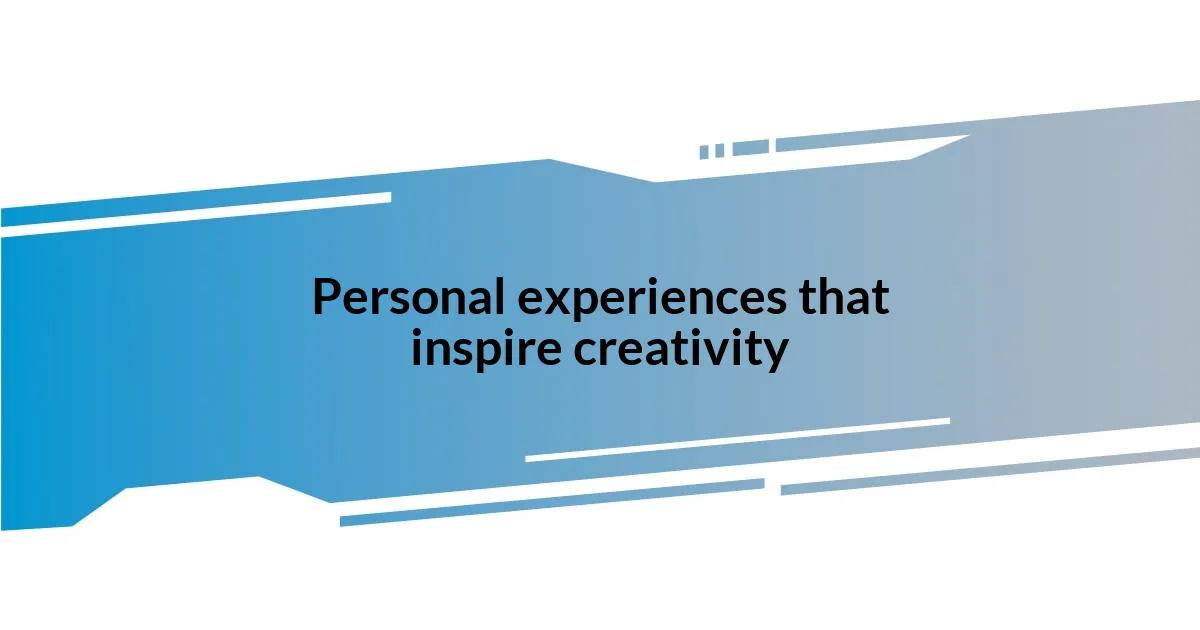
Personal experiences that inspire creativity
There’s something about a walk through a vibrant garden that ignites my imagination. I remember visiting a local botanical garden on a particularly sunny day, where I was enveloped by a kaleidoscope of colors and scents. The experience made me wonder—how can such simple blossoms elicit a flood of creative ideas? Each flower seemed to whisper its own story, sparking a rush of inspiration for my floral arrangements.
In another instance, I found myself attending a wedding where the decor was breathtaking—every table adorned with unique floral compositions that told a love story. I could feel the joy and excitement in the air, and it got me thinking: how do we convey emotions through flowers? This event inspired me to explore more profound meanings behind color choices and flower selections in my creations, adding layers of sentiment to my work.
One of my fondest memories involves helping my grandmother with her small flower shop as a child. The smell of fresh blooms and the sight of her delicate hands arranging flowers instilled in me a love for this craft. I often ask myself: what if I could evoke that same joy in others through my designs? This experience laid the foundation for my passion, reminding me that creativity flourishes in the warmth of shared moments and meaningful connections.

Nature’s influence on floral design
Nature’s influence on floral design is profound and multifaceted. Every time I immerse myself in the great outdoors, I’m struck by how the forms and textures of flowers directly inform my designs. For instance, a stroll through a forest in autumn fills my mind with the rich, earthy palettes of rust and gold, which inevitably lead me to incorporate these colors into my work.
- The vibrant blue of a summer sky inspires soothing arrangements.
- Delicate wildflowers remind me to appreciate simplicity in design.
- The contrasting shapes of leaves and petals push me to experiment with unique compositions.
- The scents of blooming flowers evoke memories, guiding my choice of fragrant elements.
Each of these natural observations challenges me to think differently about my arrangements and explore the endless possibilities derived from our environment. Whether it’s the wild unpredictability of a garden or the structured elegance of a formal landscape, nature continuously feeds my creativity, inviting me to capture its essence in my floral artistry.
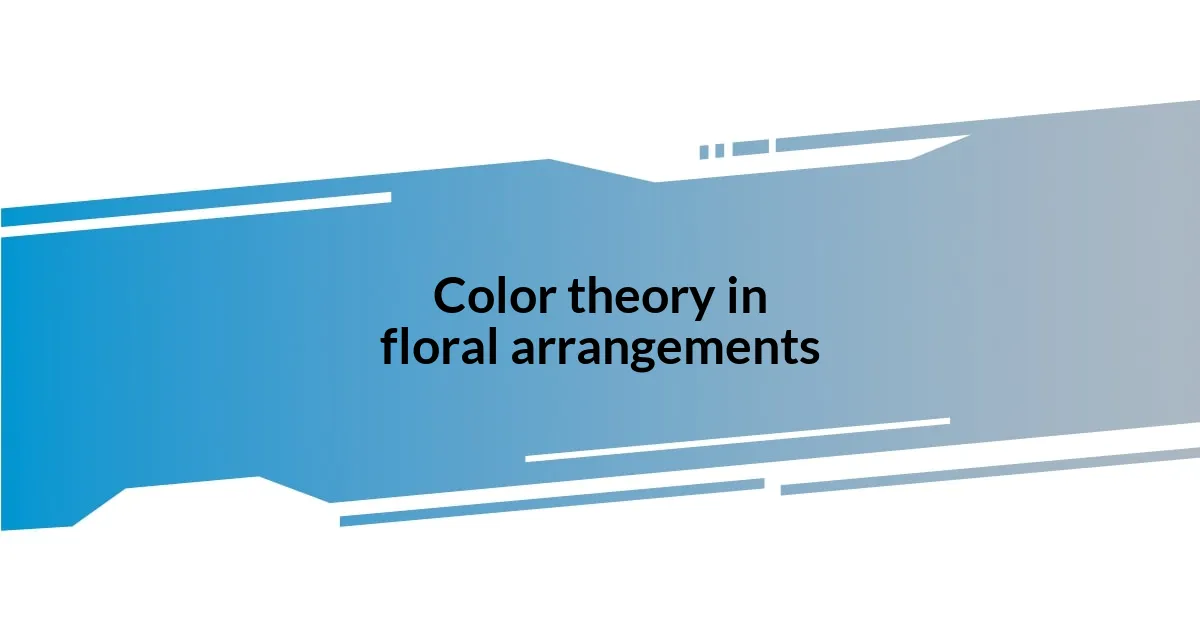
Color theory in floral arrangements
Color is a powerful aspect of floral arrangements that can evoke emotions and communicate messages without uttering a word. I often think back to a time when I created a bouquet for a friend’s birthday, carefully selecting colors that reflected her vibrant personality. The bright yellows and lively pinks not only captured her spirit but also illuminated the entire room, fostering an atmosphere of joy and celebration. It truly reinforced my belief that the right colors can transform a simple arrangement into a heartfelt gift.
I’ve found that understanding color theory has elevated my artistry. For instance, complementary colors—those that sit opposite each other on the color wheel—add striking contrast, drawing the eye and creating dynamic arrangements. When I designed a centerpiece featuring orange lilies and blue delphiniums, the interplay between these bold colors sparked conversations among guests, illustrating how color choices can enhance social experiences. This deep connection to color resonates with me on many levels; it’s not just about aesthetics but about storytelling through floral design.
The psychology of color is intriguing as well. Each hue carries its own emotional weight, influencing how people perceive an arrangement. For example, when I once used calming greens paired with soft whites for a peaceful retreat centerpiece, several guests remarked on how it brought a sense of tranquility to the space. This experience taught me that incorporating color thoughtfully can create an ambiance that supports the intended message of the occasion. It’s a constant reminder that every floral creation I make holds the potential to evoke feelings and memories, reinforcing my passion for this art form.
| Color | Emotion |
|---|---|
| Yellow | Joy and Cheerfulness |
| Blue | Calm and Serenity |
| Red | Love and Passion |
| Green | Growth and Harmony |
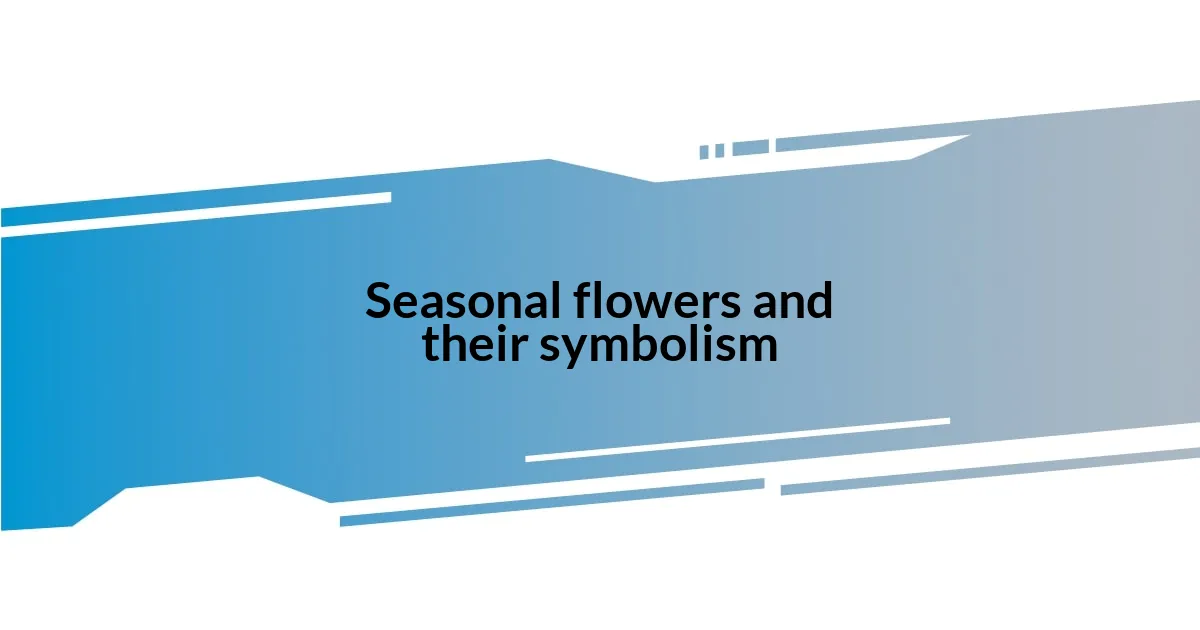
Seasonal flowers and their symbolism
The beauty of seasonal flowers goes far beyond their appearance; they carry deep-rooted symbolism that connects us to nature in profound ways. For instance, when I create arrangements with tulips in the spring, I can’t help but reflect on their association with new beginnings and the hope that comes with warmer days. It’s almost magical to see how these blooms resonate with the renewal that spring brings. Have you ever noticed how a simple bouquet of daffodils can light up a room, just as they symbolize cheerfulness and renewal? It’s a fitting reminder of how the right flower can encapsulate the essence of a moment.
In summer, I often find myself drawn to sunflowers, which represent adoration and loyalty. The way they turn their faces toward the sun always inspires me to embrace positivity, a much-needed sentiment during life’s challenges. One particular summer, I crafted a large arrangement for a wedding, much to the delight of the couple. Their smiles were infectious, and it reinforced my belief that these flowers do more than beautify; they create an atmosphere filled with joy and celebration. Have you experienced the transformative power of seasonal flowers in your own life?
As fall arrives, I turn to chrysanthemums, which symbolize optimism and joy. There’s something incredibly soothing about their earthy tones and sturdy forms. I distinctly recall an autumn gathering where I arranged a centerpiece with vibrant oranges and deep reds, perfectly mirroring the landscape outside. Guests were drawn to it, sharing stories about the warmth of changing seasons. It’s in these moments that I realize how each bloom serves as a vessel for connection, capturing shared emotions and memories—reminding us of the cycles of life and the feelings that come with each season.
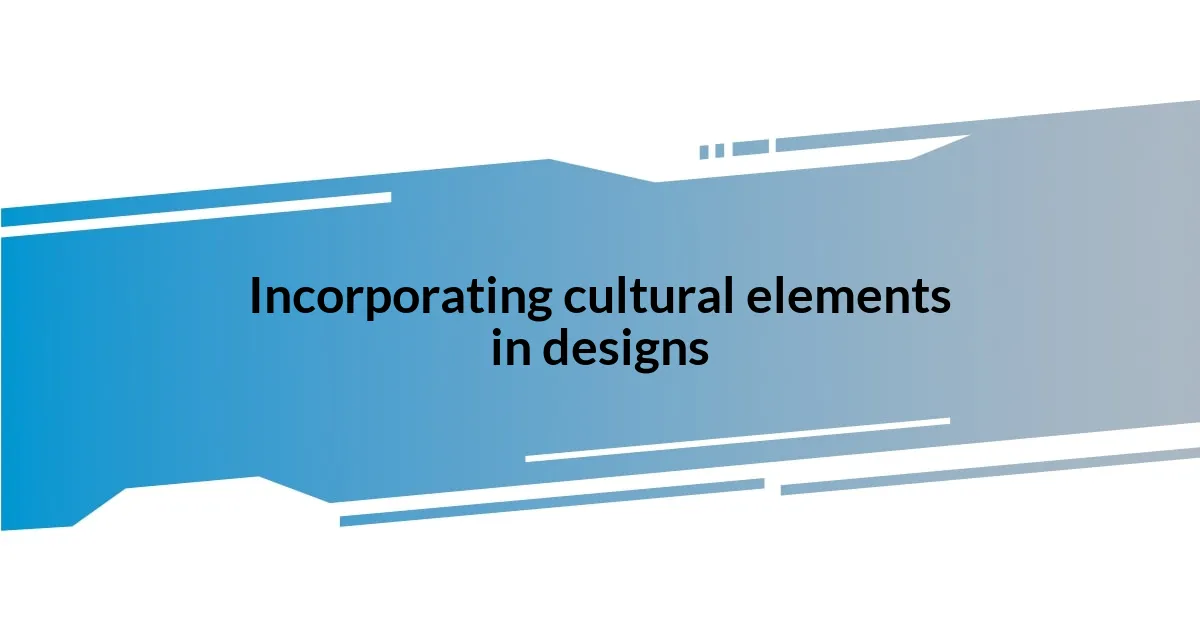
Incorporating cultural elements in designs
In my floral designs, I often draw inspiration from various cultures, weaving their unique elements into my arrangements. I remember crafting a centerpiece inspired by traditional Japanese Ikebana, where every stem has meaning, and balance reigns supreme. This mindful approach to placement encouraged me to consider how each flower and leaf contributes to the overall narrative of the piece, transcending mere decoration to become a visual representation of harmony. Have you ever thought about how a bouquet can tell a story beyond its beauty?
Exploring cultural symbols is also a delightful journey for me. There was a time when I created an arrangement for a multicultural wedding, incorporating vibrant marigolds which symbolize celebration in Indian culture. The richness of their color and the significance behind them not only honored the couple’s heritage but also brought an exuberant vibe to the event. It’s fascinating how embracing cultural sentiments can add layers of meaning that resonate deeply with both the creators and the recipients of floral art.
Moreover, I find that merging various traditions fosters a sense of community within my designs. At one community event, I combined elements from Native American floral traditions, which emphasize the connection between nature and spirituality, along with Mediterranean herbs symbolizing welcome and hospitality. This blend not only beautified the setting but also sparked conversations about our shared artistry and traditions. It made me realize that each floral creation is a chance to celebrate diversity and connection in our interconnected world. Don’t you find it thrilling to see how flowers can bridge cultural gaps and inspire unity?
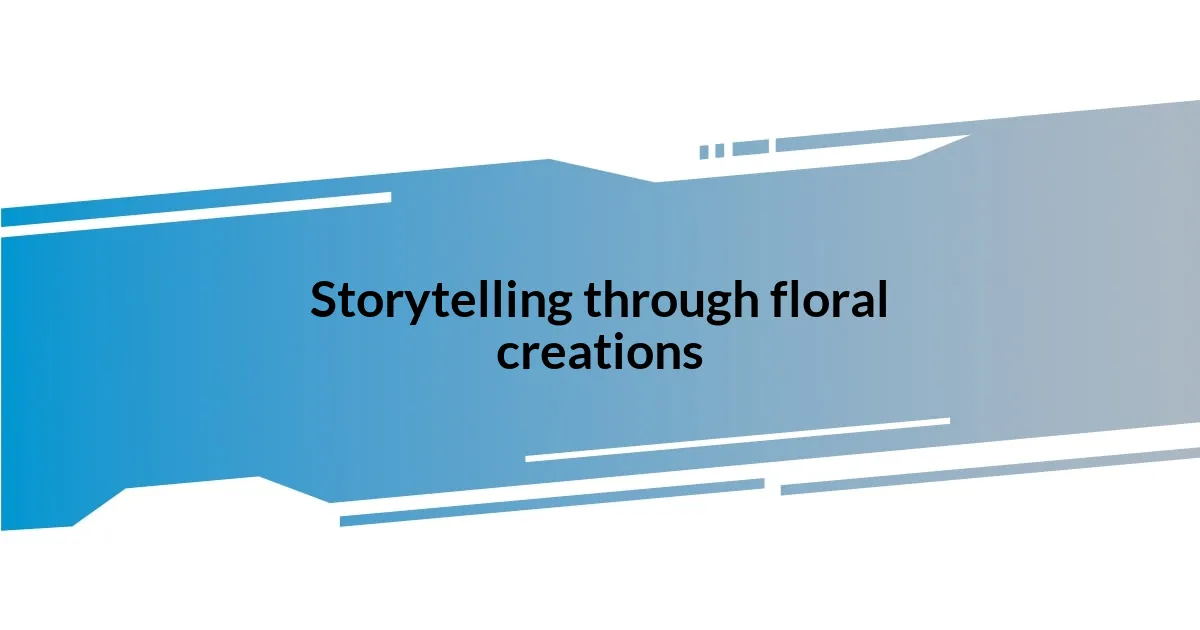
Storytelling through floral creations
When I create floral arrangements, I often see them as chapters of a larger story, each bloom representing a distinct emotion or memory. One memorable project involved crafting a poignant tribute for a friend’s memorial service, where I selected white lilies to symbolize purity and the tranquility of the afterlife. I distinctly remember how the soft fragrance filled the space, bringing comfort to those mourning. Isn’t it amazing how a composition of flowers can evoke such profound emotions and help us navigate our feelings?
In my experience, storytelling through floral art doesn’t just reside in the blooms themselves but also in the way they are presented. I once designed a romantic arrangement for an anniversary celebration, using deep red roses and delicate baby’s breath. As I arranged them, I reflected on the couple’s journey and their unwavering love. It was heartwarming to witness their reactions, as they shared sweet memories sparked by the flowers. Have you ever felt that rush of nostalgia when looking at a familiar bouquet?
Moreover, reflecting on my travels has opened my eyes to how flowers can tell so many stories across different landscapes. I recall visiting a lavender farm in Provence, where the vibrant hues mirrored the vastness of the fields under the sun. Inspired, I created a piece that combined lavender with wildflowers from my own garden, reflecting an intersection of experiences and senses. It’s fascinating how these combinations can narrate tales of places, moments, and emotions—don’t you think that every floral creation can carry a narrative waiting to be explored?